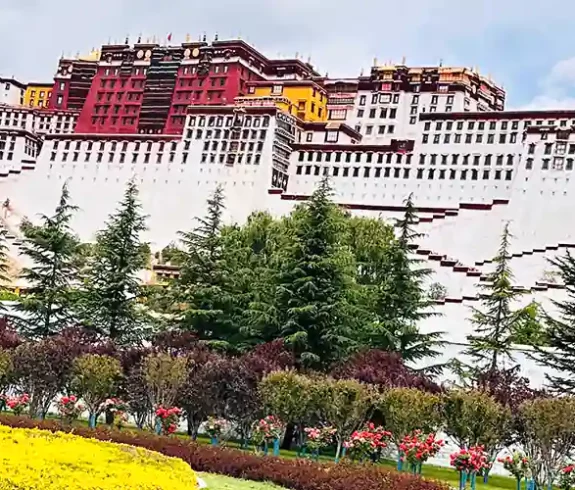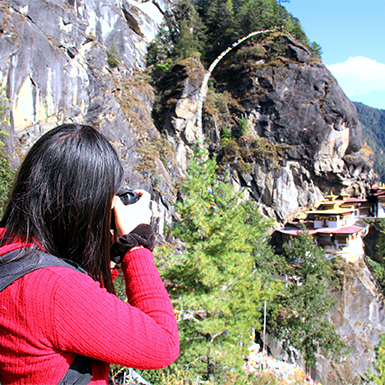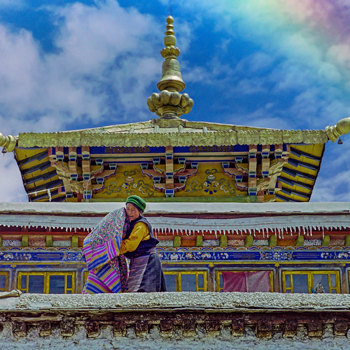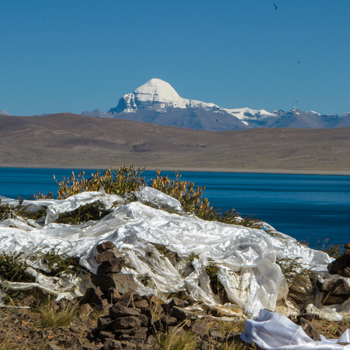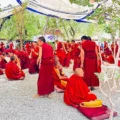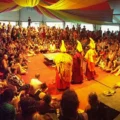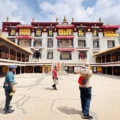Are you dreaming of a travel adventure unlike any other? Then Tibet, often referred to as the “Roof of the World,” should be at the top of your list. This majestic region offers breathtaking landscapes, a rich cultural heritage, and a deeply spiritual atmosphere. To fully appreciate the wonders of Tibet, selecting the best time to visit Tibet is crucial. The region’s unique climate and geographical conditions significantly impact your travel experience. This Tibet travel guide will reveal the secrets of Tibet’s seasons and help you decide when to visit.
Understanding Tibet’s Weather and Seasons
Tibet’s high altitude and location on the Tibetan Plateau create a distinct climate. The region has cold, dry winters and mild, relatively short summers. Spring arrives late in April, bringing pleasant temperatures with minimal rainfall. Autumn offers stunning landscapes with vibrant foliage but is brief, lasting from September to October. Traveling to Tibet during these shoulder seasons can be ideal. Understanding the specific advantages of each of the Tibet seasons will help you make the most informed decision.
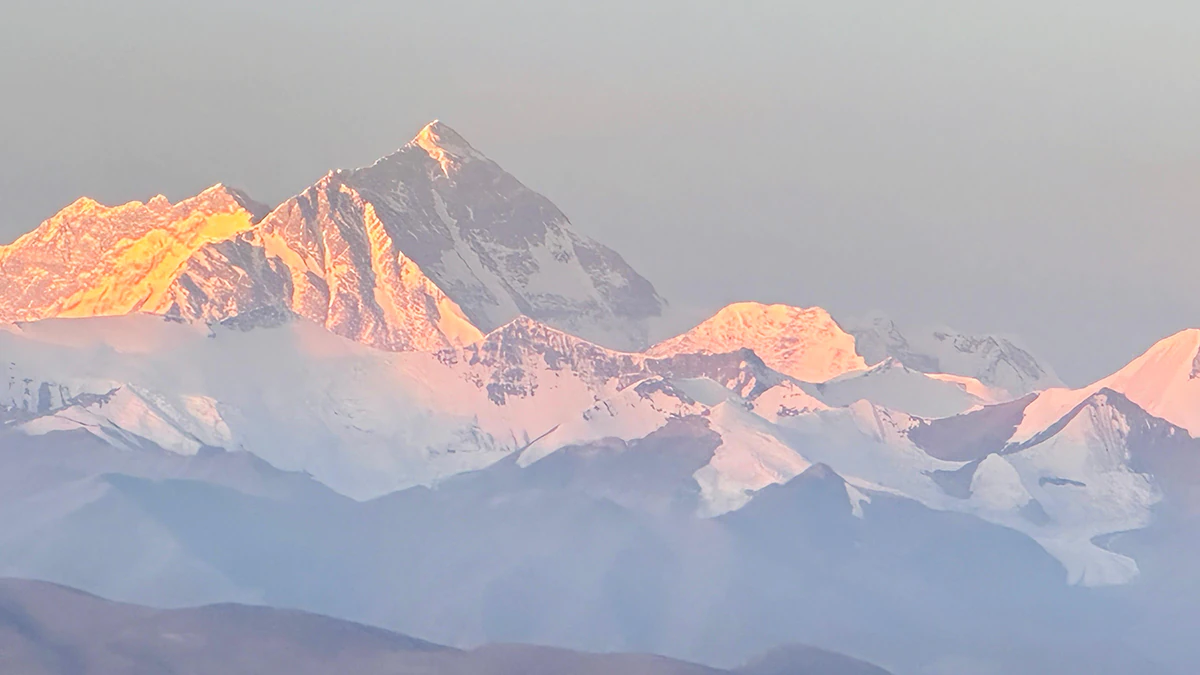
Overview of Tibet’s Climate
Understanding Tibet’s climate is key to determining the best time to visit Tibet. This majestic region, nicknamed the “Roof of the World,” boasts a unique climate shaped by its high altitude and dramatic geography. Tibet sits on the Tibetan Plateau, the world’s highest and largest, with an average elevation exceeding 4,500 meters (14,764 feet). This immense altitude significantly impacts Tibet’s weather patterns, creating a distinct climate unlike anywhere else on Earth.
Key Features of Tibet’s Climate:
- Thin Air: Due to the high altitude, travel to Tibet means experiencing thinner air with less oxygen. It can lead to altitude sickness for some visitors. Understanding Tibet seasons and choosing the right time to visit can help mitigate altitude-related issues. Colder temperatures generally hold more oxygen, making spring and autumn preferable for those concerned about altitude sickness.
- Dryness: Tibet’s climate is generally dry throughout the year. The Himalayas block most of the monsoon rains from reaching the plateau, resulting in arid conditions. However, occasional rain showers can occur, particularly during the summer months.
- Temperature Variations: Tibet weather experiences significant temperature swings throughout the day. Even during the warmest summer months, nights can be quite chilly. A Tibet travel guide that considers seasonal variations will recommend packing layers for optimal comfort during your visit.
- Sunshine: Tibet boasts an abundance of sunshine year-round due to its high altitude and clear skies. This sunshine can be intense, so packing sunglasses and sunscreen is essential for any travel to Tibet.
Seasonal Breakdown to Pick the Best Time to Visit Tibet
Spring (April – May):
In Tibet, spring arrives a little later than usual, with the winter cold gradually melting. Traveling to Tibet during this shoulder season allows you to experience comfortable daytime temperatures with clear skies. The landscape bursts into vibrant life, with wildflowers carpeting the valleys, transforming the scenery into a colorful tapestry. Here’s what makes spring a favorable time to visit:
- Nice weather: Enjoy pleasant daytime temps that are perfect for touring without the oppressive summer heat.
- Clear skies: Springtime is a great time to photograph the expansive Tibetan countryside because the skies are clear.
- Less crowds: Spring travel is more laid-back and has fewer visitors than the busiest season.
- Unique festivals: Witness the vibrant cultural tapestry of Tibet during festivals like Losar and the Tibetan New Year, which have colorful ceremonies and traditional dances.
Things to keep in mind:
- Lingering snow: Some higher altitude areas might still be inaccessible due to snow on mountain passes.
- Limited accommodation options: Some remote areas might be limited compared to peak season.
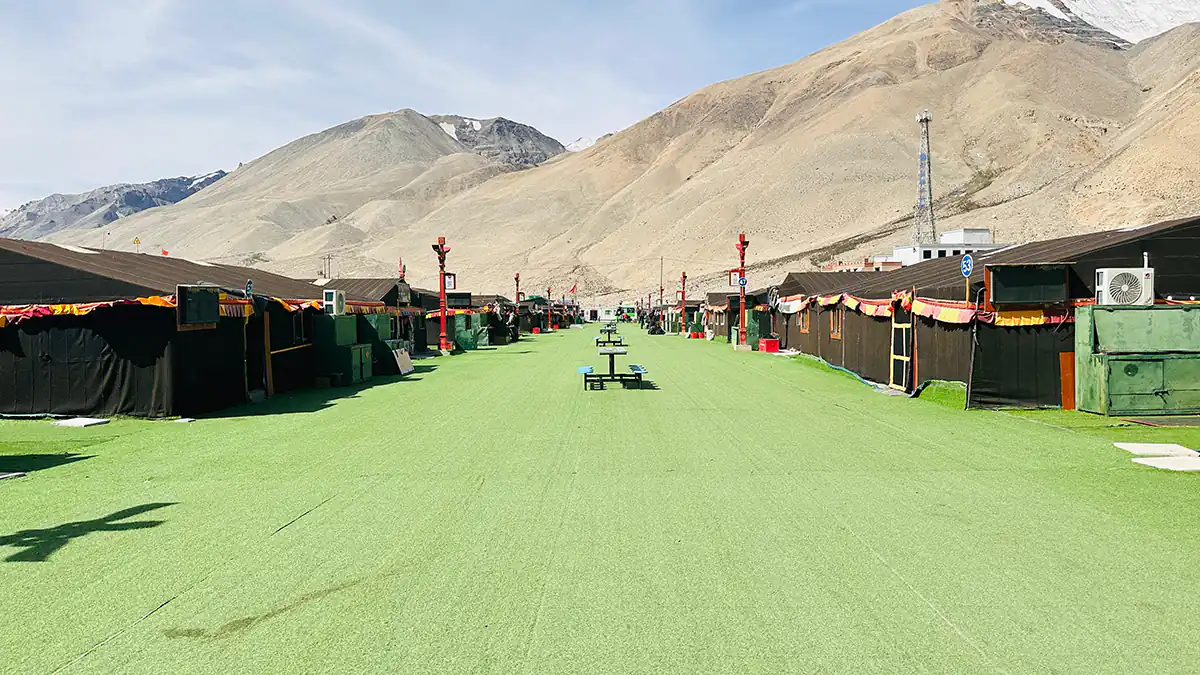
Summer (June to August): Monsoon Season with Mixed Blessings
Summer in Tibet coincides with the monsoon season, bringing a welcome increase in precipitation. While this translates to lush green landscapes, it also means more frequent rain showers and occasional cloud cover. Travel to Tibet during this time requires packing for unpredictable weather conditions. However, there are both advantages and disadvantages to consider:
- Pleasant Temperatures: Summer boasts the warmest temperatures in Tibet, with highs reaching into the low 20s Celsius (around 70 degrees Fahrenheit). This reduction in tourist numbers makes sightseeing more comfortable, especially for those unfamiliar with high altitudes.
- Vibrant Landscapes: The summer rains transform the Tibetan Plateau into a tapestry of green meadows bursting with wildflowers. Nature photographers will find this a particularly captivating time to visit.
- Fewer Crowds: Compared to the peak seasons in spring and fall, summer sees slightly lower tourist numbers. This quieter Travel to Tibet experience can be a plus for those seeking less crowded conditions.
- Higher Risk of Altitude Sickness: The warmer temperatures can exacerbate symptoms of altitude sickness. Proper acclimatization is crucial during this season.
Summer Activities
Despite the monsoon, summer offers some unique experiences for travelers:
- Trekking: While some high-altitude treks may be challenging due to Tibet Weather conditions, lower-altitude trails like those around Lhasa remain accessible.
- Festivals: Several vibrant Tibetan festivals occur during the summer, offering a glimpse into local culture.
- Wildlife Viewing: With lush vegetation comes increased wildlife activity. Keep an eye out for grazing yaks and other Tibetan animals.
Autumn (September – October):
Many travelers consider autumn the best time to visit Tibet. The summer heat subsides, giving way to crisp, dry air and breathtaking fall foliage. During this shoulder season, Tibet weather offers comfortable daytime temperatures ideal for outdoor activities.
Here’s why autumn might be your best time to visit Tibet:
- Pleasant temperatures: Enjoy comfortable daytime temperatures without the summer heat, making sightseeing more enjoyable.
- Crystal-clear skies: Autumn boasts some of the clearest skies throughout the year, offering exceptional visibility for mountain views, including Mount Everest. Photographers will find this time ideal for capturing stunning landscapes.
- Vibrant fall foliage: The Tibetan landscape transforms into a colorful tapestry of golden hues, creating a magical backdrop for your travels.
- Fewer crowds: Compared to peak summer, autumn offers a more relaxed travel experience with fewer tourists. Accommodation and travel costs might also be slightly lower.
Things to keep in mind:
- Occasional snowfall: Towards the end of autumn (late October and November), occasional snowfall can occur, especially at higher altitudes. Be prepared with appropriate clothing.
- Limited trekking options: Early snowfall might restrict some high-altitude treks.
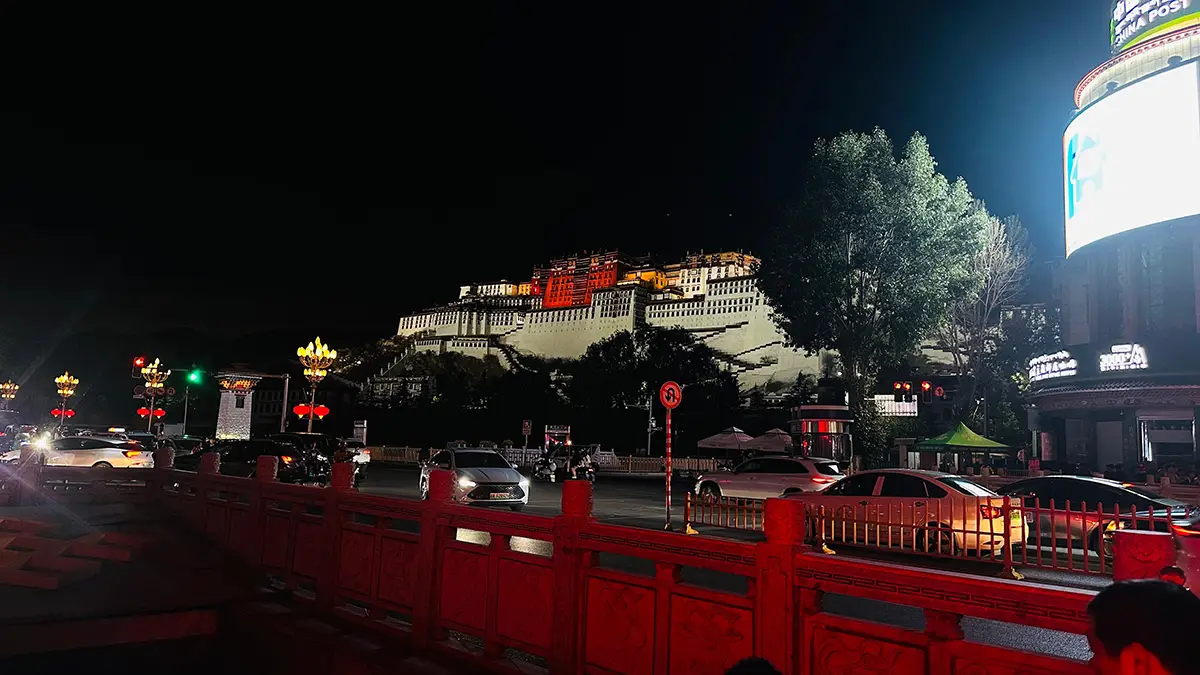
Winter (December – February):
Winter in Tibet presents a dramatic transformation. Temperatures plummet, and snowfall becomes frequent, especially at higher altitudes. While many mountain passes become inaccessible, travel to Tibet during winter offers a unique opportunity to witness the region in a pristine, snow-covered state. Here’s a look at the challenges and advantages of visiting Tibet in winter:
Challenges:
- Frigid temperatures: Winter brings freezing temperatures, sometimes reaching below -15°C (5°F). Proper winter gear is essential for any outdoor activities.
- Limited accessibility: Heavy snowfall closes many mountain passes, restricting access to certain areas. During this time, limited travel options might be available.
- Reduced opening hours: Some tourist attractions might have shorter openings or close entirely during winter.
Advantages:
- Fewer tourists: Winter is the quietest time to visit Tibet, with significantly fewer tourists. This results in a peaceful travel experience and lower travel costs.
- Unique winter landscapes: As seen, Tibet has become a frozen lake and snow-capped mountain beauty in winter. Photographers can capture beautiful winter landscapes.
- Winter festivals: Winter festivals are held throughout Tibet, providing an insight into customs and festivities.
Winter Activities:
If you choose winter as your best time to visit Tibet, you can enjoy some unique activities:
- Sightseeing in Lhasa, the Potala Palace, and other cultural centers are accessible during winter.
- I am participating in Tibetan winter festivals and experiencing local customs.
- Winter photography adventures to capture the beauty of the snow-covered landscapes.
Recommended Activities by Season: Optimizing Your Tibetan Adventure
After discussing the distinctive qualities of each Tibetan season, let’s look at how to schedule your activities to coincide with the most favorable time to visit Tibet based on your interests:
Spring (April & May): Pleasant Weather and Cultural Immersion
- Activities: Spring offers comfortable temperatures and minimal rainfall, making it ideal for sightseeing tours and cultural experiences in Lhasa, Shigatse, and Gyantse. Witnessing religious ceremonies and soaking up the vibrant atmosphere are highlights.
- Considerations: Spring can be windy at times, so pack accordingly. It’s also the beginning of peak tourist season, so expect larger crowds at popular attractions.
Summer (June to August): Monsoon Season with Mixed Opportunities
- Activities: Lower-altitude treks like those around Namtso Lake are still possible despite the rain. Summer also coincides with several Tibetan festivals, offering a glimpse into local traditions.
- Considerations: Be prepared for unpredictable weather and flight cancellations due to monsoon conditions. Pack rain gear and choose quick-drying clothing.
Autumn (September to November): Prime Time for Exploration
- Activities: Autumn is the best time for trekking enthusiasts to visit Tibet. The clear skies and stable weather create ideal conditions for exploring the Everest Base Camp trek or other high-altitude adventures.
- Considerations: Temperatures can drop sharply, particularly around November. Store warm clothing and plan for any possible cold spells.
Winter (December to March): A Unique Tibetan Experience (for the Adventurous)
- Activities: Winter offers a different perspective of Tibet, with snow-capped landscapes and fewer crowds. However, extreme cold and road closures can limit travel options. Consider visiting during the Tibetan New Year celebrations for a unique cultural experience.
- Considerations: Winter in Tibet is not for the faint of heart. Sub-zero temperatures and potential flight cancellations require proper planning and preparation for harsh Tibet Weather conditions.
Festival Seekers:
Tibet boasts vibrant festivals throughout the year. The Shoton Festival (held in summer) features a spectacular display of butter sculptures, while the Tibetan New Year (held in winter) offers a festive immersion into local traditions.
Travel Tips for Each Season: Packing and Preparing for Your Tibetan Adventure
After determining the best time to visit Tibet according to your interests, here are some valuable suggestions to guarantee a hassle-free and joyful trip, season by season:
Spring (April & May):
- Packing: Pack comfortable layers, sunglasses, and a hat. Temperatures can vary, so be prepared for both sunshine and wind. It would help if you also considered bringing light rain gear.
- Health: Given spring’s windy nature, use hydrating lotion and lip balm to ward against dry lips. Stay hydrated by drinking lots of water, especially at Tibet’s high altitude.
Summer (June to August):
- Packing: Include waterproof hiking boots, quick-drying clothing, and rain gear in your bag. Always wear a hat and sunscreen to avoid the sun. Have a raincoat or umbrella on hand for unexpected downpours.
- Health: Be mindful of the increased risk of altitude sickness during summer. Ascend gradually and avoid strenuous activity upon arrival. Diamox medication can help with altitude acclimatization. Consult your doctor beforehand. Stay hydrated and avoid excessive alcohol consumption.
Autumn (September to November):
- Packing: For colder evenings, especially in November, pack warm layers, including a fleece jacket and a down jacket. Remember a hat, gloves, and a scarf. For trekking adventures, we recommend comfortable hiking boots.
- Health: The dry air can cause dehydration, so drink plenty of water. Pack lip balm and moisturizing lotion to combat dryness. Altitude sickness is still a possibility, so continue to acclimatize gradually.
Winter (December to March):
- Packing: Pack heavy-duty winter clothing, including thermals, a thick winter coat, sturdy boots, warm gloves, a hat, and a scarf. Hand and foot warmers can be helpful for extreme cold.
- Health: Winter in Tibet brings extreme cold, with risks of frostbite and hypothermia. Dress in layers and cover exposed skin. Before traveling during winter, consult your doctor about potential health concerns.
General Tips:
- Regardless of the season, a good first-aid kit is essential.
- Pack comfortable shoes for sightseeing, as there will be a lot of walking.
- Pack a reusable water bottle to ensure you stay hydrated during the trip.
- Download a Tibetan phrasebook or translation app to help with communication.
- Be respectful of local customs and traditions.
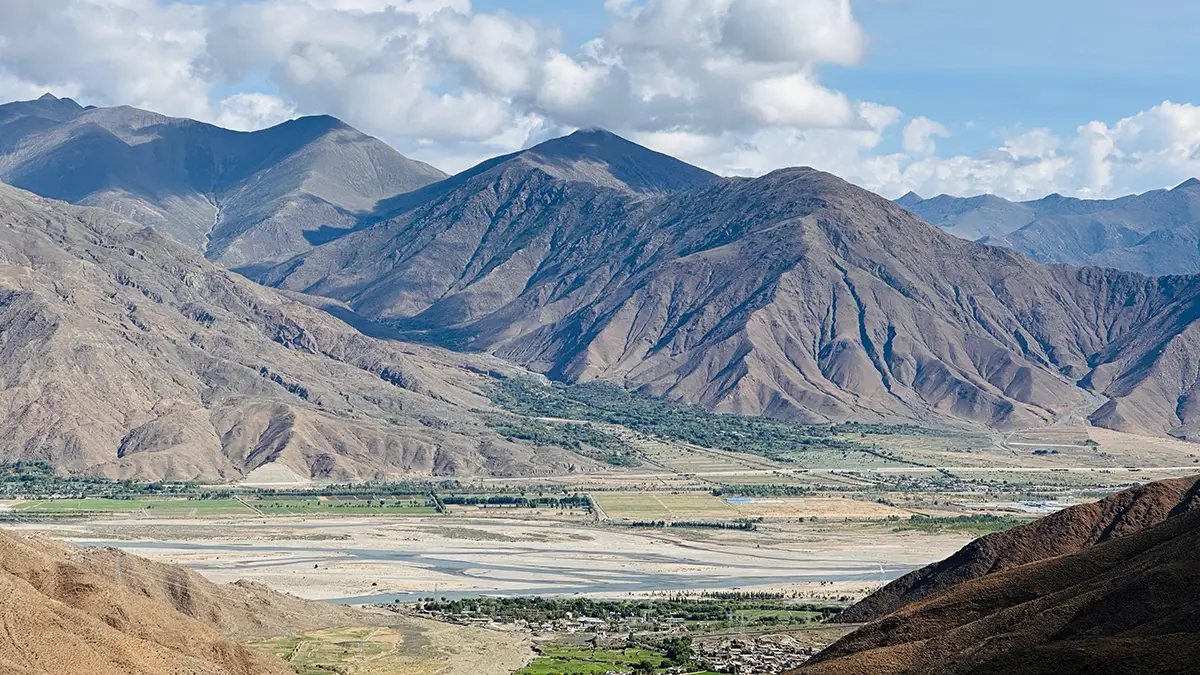
Pros and Cons of Each Season: Choosing the Perfect Time for Your Tibetan Adventure
Different benefits and drawbacks are associated with Tibet’s particular climate based on the time of year. To assist you in choosing the best time to visit Tibet, let’s examine the advantages and disadvantages of each season:
Spring (April – May):
Pros:
- Pleasant daytime temperatures are ideal for sightseeing.
- Clear skies are perfect for mountain views.
- Fewer crowds compared to peak season.
- Unique festivals like Losar, the Tibetan New Year.
Cons:
- Lingering snow might limit access to some higher-altitude areas.
- Accommodation options in remote areas might be limited.
Summer (June – August):
Pros:
- Warmest temperatures, ideal for outdoor activities like trekking.
- Photographers mostly use clear skies to capture stunning mountain views, including Mount Everest.
- Suitable for trekking adventures.
- Several vibrant Tibetan summer festivals.
Cons:
- Peak season crowds and potentially higher travel costs.
- Monsoon rains can disrupt outdoor activities with occasional afternoon showers.
Autumn (September – October):
Pros:
- It is considered by many as the best time to visit Tibet due to comfortable temperatures.
- Crystal-clear skies, ideal for photographers and mountain views.
- Vibrant fall foliage creates a stunning backdrop.
- Fewer crowds compared to summer.
Cons:
- Occasional snowfall is possible towards the end of the season, especially at higher altitudes.
- Early snowfall might restrict access to some high-altitude treks.
Winter (December – February):
Pros:
- Fewest tourists and potentially lower travel costs.
- Witnessing Tibet’s dramatic winter landscapes is a unique opportunity.
- Winter festivals offer a glimpse into local traditions.
Cons:
- Frigid temperatures require proper winter gear for any outdoor activities.
- Limited accessibility due to heavy snowfall closing many mountain passes.
- We have reduced opening hours for some tourist attractions.
Conclusion
Tibet, the ‘Roof of the World,’ attracts travelers with its magnificent sites, deep-rooted culture, and religious ambiance. However, choosing the best time to visit Tibet is crucial to fully appreciating its magic. This Tibet Travel Guide has equipped you with the knowledge to navigate Tibet’s unique seasons and determine the perfect time for your adventure.
When to Visit Tibet?
The answer depends on your travel preferences:
- Pleasant weather and cultural immersion: Spring (April & May) offers comfortable temperatures and minimal rain, ideal for sightseeing and cultural experiences.
- Warm weather and vibrant landscapes: Summer (June to August) boasts the warmest temperatures, perfect for those who prefer comfortable sightseeing. However, be prepared for potential monsoon rains.
- Clear skies, outdoor activities, and stunning fall foliage: Many travelers consider autumn (September to November) the best time to visit Tibet. Expect dry weather, comfortable temperatures, and breathtaking mountain views.
- Unique winter experience and cultural celebrations: Winter (December to March) offers a different perspective with snow-capped landscapes and the festive Tibetan New Year celebrations. However, frigid temperatures and limited travel options require careful planning.
